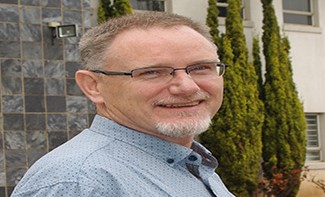Sustainability remains a hot topic as it’s the right thing to do. It’s the hard returns that will get companies taking action. However, while new greener technologies are being architected into the design of new buildings in South Africa, there remains a major disconnect in older commercial facilities between landlords and tenants on the topic – to the detriment of both. To quantify the opportunity, consider that potential energy cost savings – which mostly depend on the implementation of proven new technologies – are 30% to 80%.
A United Nations (UN) Environment Programme study looking at the 40-year lifecycle costs of a building spells out the challenge: only 11% of the cost is incurred in the construction of the facility, while 50% of the lifecycle costs are incurred through the running of the building. Looking at a breakdown of running costs, lighting consumes 25% and office equipment about 20%, while Heating, Ventilation and Air Conditioning (HVAC) account for a massive 45%.
The landlord or property owner who does not pay for the electricity used by the tenant is not under any pressure to move towards greener, more energy efficient technologies. In fact, older less efficient technologies can be cheaper to install and therefore, more awareness is needed. Here are three good bottom line pleasing reasons to press for change or hold out for a facility with green credentials:
• Smart green technologies are relatively easy to come by, easy to implement, and can show rapid returns on investment in the form of almost immediate cost reductions – i.e., a 30% to 80% reduction in costs.
• Energy efficient technology increases the value of property and its attractiveness to tenants.
• Reducing the carbon footprint of the facility will incur less carbon tax, which is expected to take effect in 2016.
Green technology
In commercial buildings there are two key areas where green technologies can make an immediate impact:
• At hardware or plant level, with tweaks, small additions and retrofits, or replacements driving operating efficiencies; and
• At strategy and management level, with a Building Management System (BMS) providing a single platform to integrate all building systems (from chillers or other HVAC equipment to lighting, CCTV, access control and fire alarms). Furthermore, the means to design, configure and implement and energy management policy, and automate, monitor, report on and refine facility performance.
Where do you start?
Any good strategy starts with an energy audit (taking stock of what equipment is in place, and of current performance and energy consumption), and how that stacks up against the current and long term needs of the business. This will help identify immediate or quick wins, and help determine the business case for investments.
Fast wins can come in the form of simple policy shifts and standard energy saving approaches. For example, outdated HVAC approaches rely on ‘set and forget’ strategies where chillers and other equipment were manually set to cater for worst case scenarios – e.g., a hot summer’s day. In reality, that high level of performance is only required a small part of the time. By installing sensors to measure actual internal and external temperatures and carbon dioxide levels, equipment can respond to actual demand. Optimal stop/start times can be set for HVAC equipment using adaptive control algorithms so that air conditioning is at the right comfort level at set occupancy times or, depending on temperatures, the plant can be stopped early and still maintain comfort levels.
To manage energy consumption and cost, thresholds can be set. This allows strategies like demand limiting, which sheds load during peak demand to reduce consumption, and load rolling, which sheds non-critical loads to maintain specified consumption, to be applied. What holds it all together is a BMS.
The lynchpin – a BMS
Find a BMS that is built on open systems and is able to tie together disparate building systems, including lighting, HVAC, access control, security and energy billing. Ease of use complemented by mobile accessibility, ease of integration, configuration and automation, and the quality of reporting should be primary considerations.
Reporting will facilitate better control and cost savings. A good report should provide:
• An energy overview, a single high level report that displays normalised energy use;
• Identification of equipment that is consuming more energy than the accepted standard.
• Consumption in the default units of each energy type;
• Electrical energy usage, which includes peak demands, reactive power, and power factor; and
• Production or energy generation, reflecting the energy the site is producing (if photo voltaic panels or other means of energy generation is installed.
How effective can an investment be? For SABC Auckland Park, an investment of R2.5 million achieved R23 million in savings over 18 months. The investment was primarily allocated to the upgrading and reprogramming of controllers, and installation of damper actuators and evaporative coolers across its radio and TV offices and studios.
Going green, improving the businesses eco-footprint and working towards becoming a more sustainable business are admirable sentiments but in business little gets done until you add real bottom line benefits. Clearly, the benefits are there to be had.
